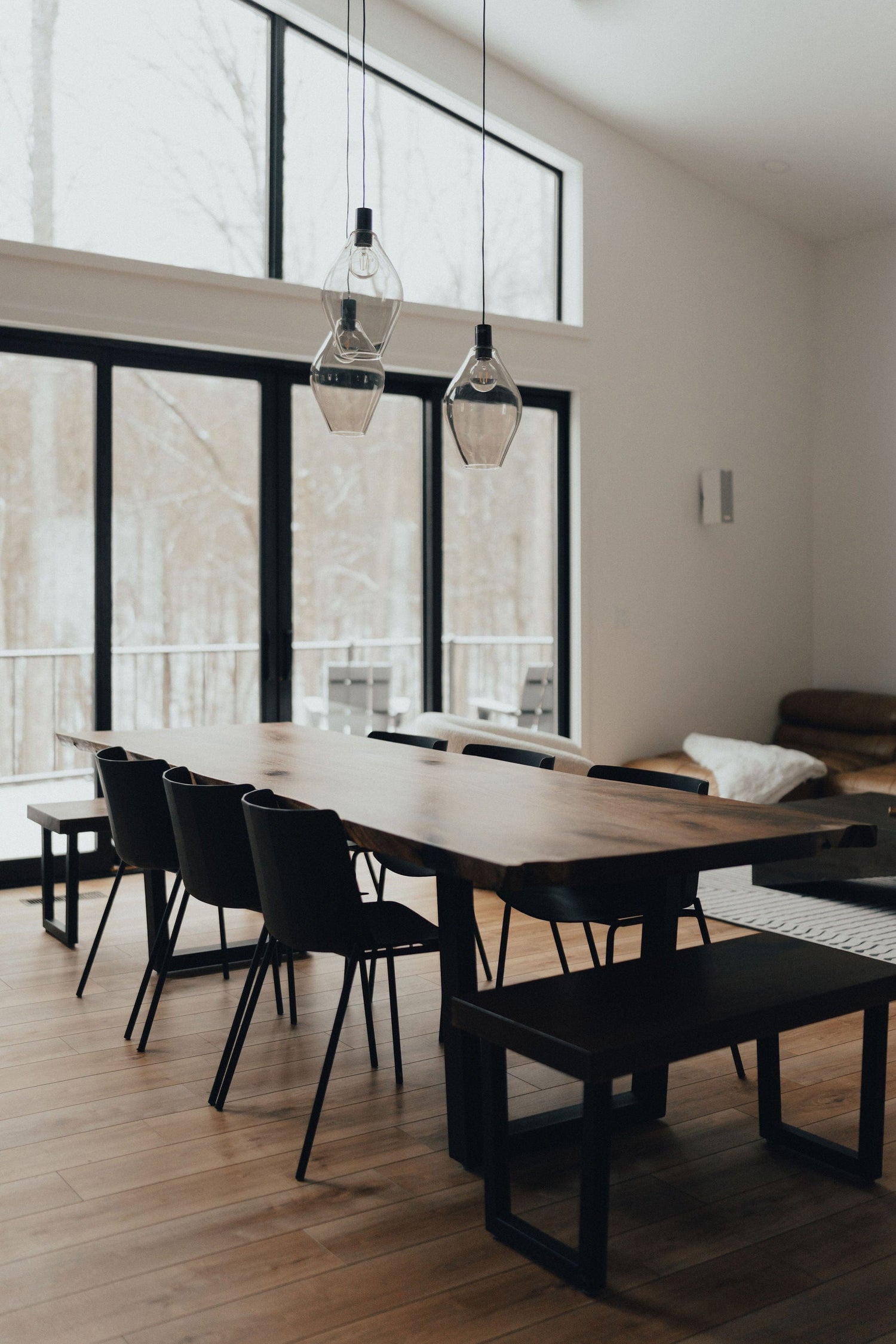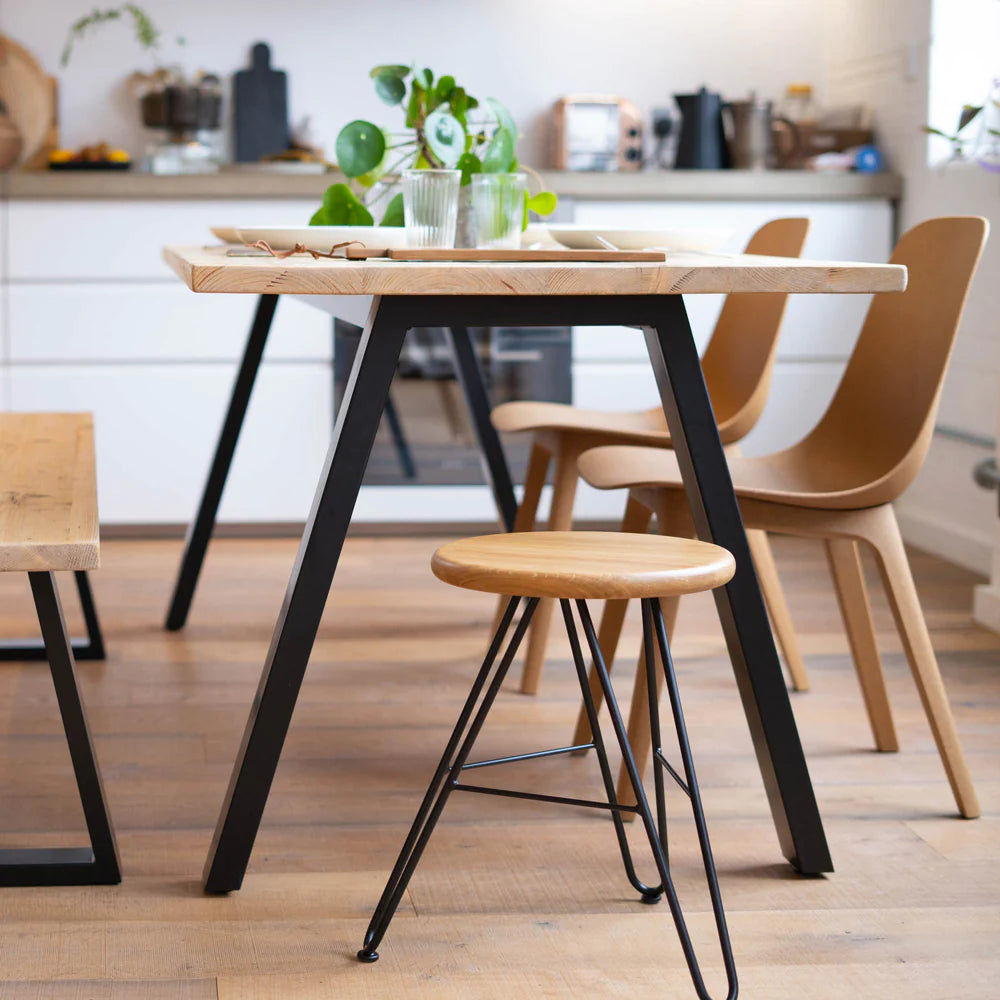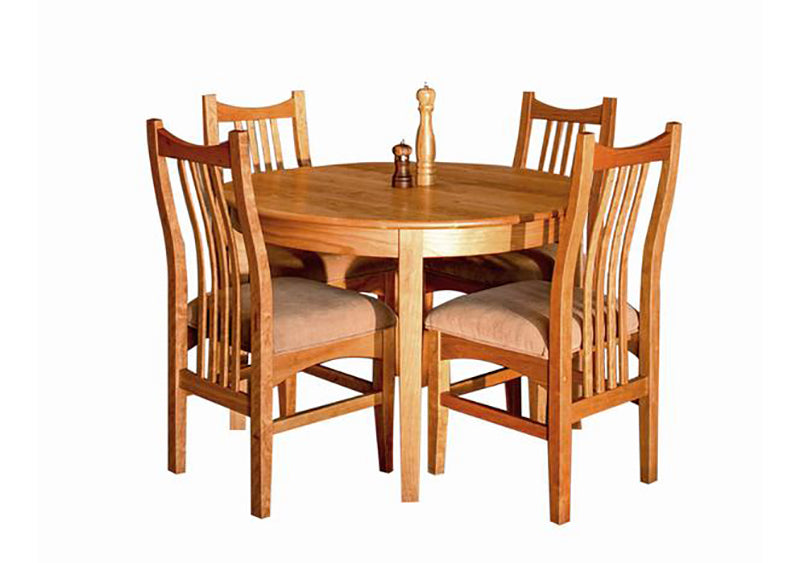Exactly How to Select the Perfect Dining-room Table Legs for Your Home Décor
Choosing the suitable dining-room table legs is a nuanced process that calls for cautious factor to consider of various aspects, including your room constraints, aesthetic preferences, and sensible demands. The interplay between measurements, materials, and designs can significantly influence the setting of your dining location, making it vital to approach this choice methodically. As you consider the myriad options available, it comes to be clear that the ideal option extends beyond plain appearance; it can boost your general eating experience. What elements should you focus on to ensure your selection complements your home's unique personality?
Assess Your Dining Space
Evaluating your dining room is crucial for choosing the right table legs that match both aesthetic appeals and functionality. Begin by determining the dimensions of your dining area, consisting of ceiling height, flooring space, and distance to various other furnishings. This details will assist figure out the ideal size and height of your table, which directly affects the selection of table legs.
Following, think about the style and format of your dining space. An open-concept layout might benefit from table legs that supply visual agility, such as slender metal or acrylic options. Alternatively, a more traditional setting might call for strong wooden legs that provide a feeling of permanence.
Review the existing shade combination and products in your eating location. Balancing the table legs with these aspects creates a natural appearance that improves the general decoration.
Ultimately, an extensive evaluation of your eating space will certainly lead you in making an informed choice, ensuring that your table legs not just boost the visual allure yet likewise serve useful functions.
Consider Your Style Preferences
When selecting dining-room table legs, it is vital to review your individual design preferences, as they significantly influence the total aesthetic of your dining room. Your selection of table legs can either enhance or comparison with existing decor, making it essential to align them with your recommended interior decoration motif.
If your home leans in the direction of a modern visual, take into consideration sleek metal or minimalist wooden legs that supply a tidy, minimalist look. For a more conventional method, luxuriant wooden legs with detailed carvings can include a touch of style and elegance. Industrial styles profit from robust, basic materials such as recovered wood and metal mixes, mirroring a rugged appeal.
In addition, farmhouse and rustic designs commonly favor sturdy, chunky legs that evoke a sense of warmth and convenience. Alternatively, if your decor is diverse, you might select unusual shapes or a mix of products to produce aesthetic interest.

Evaluate Material Options
The choice of material for eating area table legs plays an essential duty in both longevity and aesthetic allure. Common products consist of wood, steel, and composite alternatives, each offering distinctive characteristics that can influence the overall look and durability of your table.
Wood is a timeless selection, recognized for its heat and flexibility. Hardwoods like oak and walnut give phenomenal stamina and can be finished in different stains to match any kind of design. Nevertheless, softwoods like pine are a lot more prone to dents and scratches, making them much less optimal for high-traffic areas.
Steel legs, often crafted from steel or light weight aluminum, radiate modernity and industrial beauty. They are very durable and resistant to wear, making them ideal for households with kids or regular gatherings (dining room table legs). Furthermore, metal can be finished in numerous shades, improving the customization opportunities
Composite materials, official source such as MDF or laminate, deal cost and varied layouts. While typically less durable than strong wood or steel, they can still offer a stylish look and are often simple to maintain.
Inevitably, the material you choose should straighten with your lifestyle, aesthetic choices, and the degree of usage your eating table will certainly experience.
Determine Elevation and Size
Picking the ideal elevation and size for your eating space table is important for both functionality and comfort. The basic height for eating tables normally ranges from 28 to 30 inches, allowing enough legroom for the majority of individuals when seated. Nonetheless, it is vital to consider the measurements of your dining room and the sorts of chairs you prepare to utilize.

In addition, consider the proportions of your eating room. A larger table in a sizable area can develop a grand ambiance, while a smaller table works well in even more intimate setups. Inevitably, the ideal elevation and dimension will certainly balance with your overall decor and boost the eating experience for you and your visitors.
Explore Modification Possibilities

In addition, the style of the legs can be personalized to fit different designs, such as rustic, modern, or industrial. Tapered legs can evoke a mid-century modern feel, while chunky, block-style legs might reverberate with traditional or farmhouse decor.
Homeowners can additionally discover shade surfaces, from all-natural timber spots to paint, enabling them to match or contrast with the table top and surrounding style.
In addition, leg elevation can be adjusted to suit specific seating arrangements or personal preferences, enhancing both convenience and capability.
Finally, special embellishments, such as makings or ornamental brackets, can better customize the table legs, making the eating experience not just a meal however a declaration piece in the home. By thinking about these modification alternatives, home owners can develop a dining-room table that really mirrors their originality.
Conclusion
Picking the excellent eating room table legs needs cautious factor to consider of various elements, including the dimensions of the dining space, style choices, material sturdiness, and preferred elevation. Customization options additionally improve the capability to accomplish a natural aesthetic that complements the general style. By methodically evaluating these components, property owners can guarantee that the chosen table legs not pop over to these guys just meet practical needs but additionally add positively to the dining experience and atmosphere of the home.
Picking the excellent eating space table legs is a nuanced process that requires mindful factor to consider of various aspects, including your room constraints, aesthetic choices, and practical needs.Analyzing your dining area is critical for choosing the right table legs that enhance both appearances and performance.When figuring out size, gauge the location where the table will be placed to ensure it fits comfortably, permitting for at the very least 36 inches of clearance around the table for very easy motion. A larger table in a sizable area can produce a grand ambiance, while a smaller table works well in even more intimate settings.Selecting the optimal eating space table legs requires careful consideration of numerous aspects, consisting of the dimensions of the eating area, style preferences, material resilience, and wanted elevation.